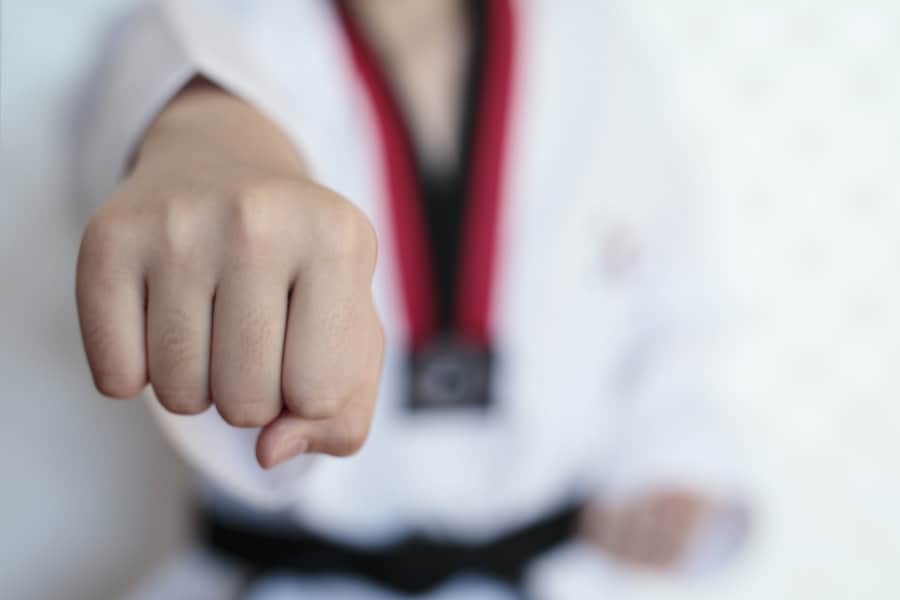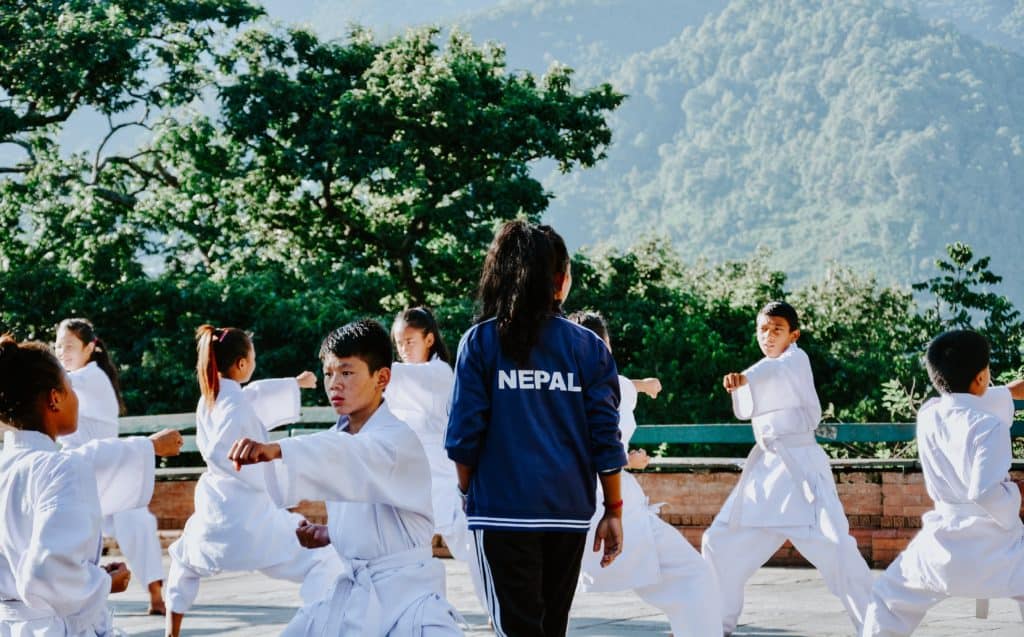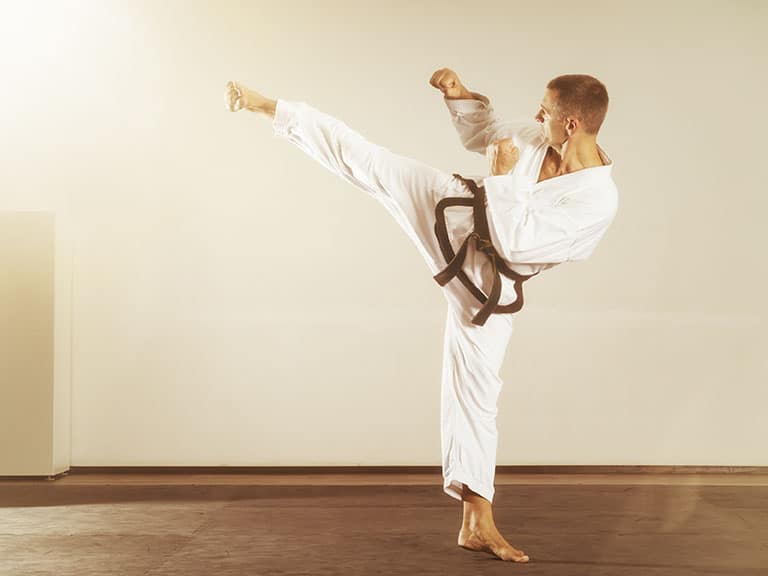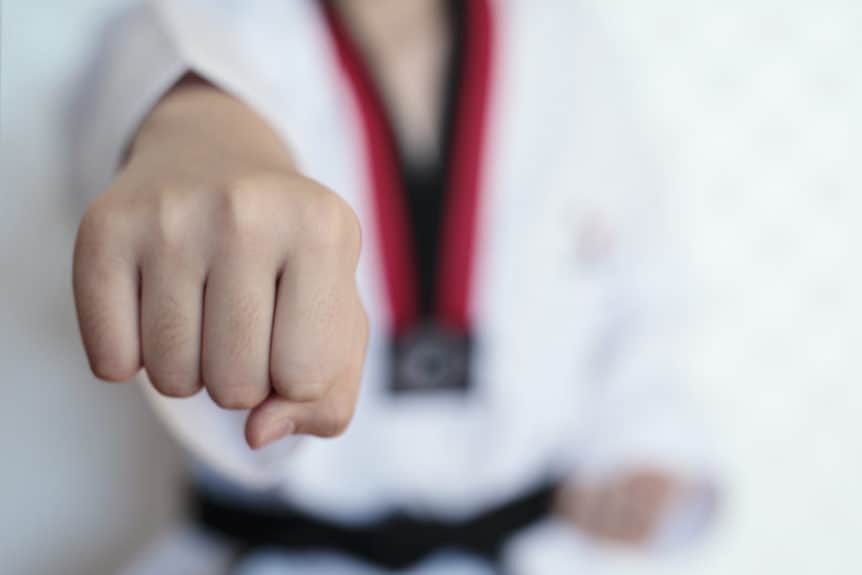
If you’re dipping your toes into the world of Taekwondo or already tying up your dobok for class, you’ve likely come across the term “poomsae.” In Taekwondo, poomsae—sometimes spelled pumsae—are the beating heart of the practice. These choreographed sequences of movements blend attack and defense techniques into a fluid, purposeful dance.
Far more than a physical exercise, poomsae are a way to hone your skills, sharpen your focus, and tap into the deeper spirit of this Korean martial art. Whether you’re prepping for a belt test or just curious about what makes Taekwondo unique, understanding poomsae is your gateway to appreciating the full scope of the discipline.
So, what are poomsae, exactly? They’re prearranged patterns of blocks, strikes, and kicks—often called Taegeuk forms in modern Taekwondo—that simulate combat against an imaginary opponent. Each form is a carefully crafted sequence, designed to test and develop your abilities.
When you step up to perform a poomsae, your instructor can read your progress like an open book: your technique, strength, and mental clarity all shine through. It’s not just about looking good; it’s about embodying the principles that define Taekwondo as both a martial art and a way of life.
The Building Blocks of Poomsae

Poomsae aren’t random moves strung together—they’re a rich blend of elements that take your Taekwondo skills to the next level. Picture them as a recipe with key ingredients: technique, knowledge, attitude, focus, posture, timing, power, and breathing. It might feel like a lot to juggle when you’re starting out, but each component has a purpose. Technique is the foundation—your blocks need to stop an attack cold, your strikes should pack a punch, and your kicks must hit their mark. Knowledge goes beyond memorizing steps; it’s about understanding the form’s pattern, its history, and even the philosophy behind it. A strong attitude keeps you motivated, while focus turns those moves into a mental exercise as much as a physical one.
Then there’s posture, which keeps you grounded and balanced, and timing, which gives your poomsae its rhythm. Power makes your techniques effective, and breathing—paired with the iconic kihop shout—ties it all together with control and energy. For instance, when you throw a middle punch in Taegeuk Il Jang, you’re not just swinging at air—you’re aiming for an opponent’s chest, eyes locked on the target, imagining the impact. A high block isn’t just a motion; it’s a redirection of an incoming strike. And that roundhouse kick? It’s aimed at an opponent’s face, delivered with precision and intent. This mix of imagination and execution is what makes poomsae so engaging.
Why Poomsae Matter in Taekwondo
Poomsae are a cornerstone of Taekwondo for a reason—they’re your ticket to progressing through the ranks. Every belt test includes a forms component, and as you climb the ladder, the poomsae get more intricate. Starting with the Taegeuk series, these forms build on each other, challenging you to refine your skills and adapt to new techniques. Unlike fitness goals like running a 5K or mastering a push-up routine, perfecting poomsae isn’t something you can rush. It’s a long game, requiring years of practice to show not just the steps but the control and mastery behind them.
Here’s a breakdown of how poomsae evolve across the belt levels in a typical World Taekwondo (WT) system:
| Belt Level | Poomsae Example | Focus |
|---|---|---|
| White Belt | Taegeuk Il Jang | Basic stances and blocks |
| Yellow Belt | Taegeuk Ee Jang | Flow and simple kicks |
| Orange Belt | Taegeuk Sam Jang | Coordination and basic combos |
| Green Belt | Taegeuk Sa Jang | Power and intermediate techniques |
| Blue Belt | Taegeuk Oh Jang | Balance and dynamic transitions |
| Purple Belt | Taegeuk Yuk Jang | Precision and complex sequences |
| Brown Belt | Taegeuk Chil Jang | Strength and advanced footwork |
| Red Belt | Taegeuk Pal Jang | Mastery of timing and control |
| Black Belt (1st Dan) | Koryo | Advanced combos and precision |
The table reflects a common World Taekwondo (WT) belt system, starting with white and progressing to black belt (1st Dan). Some schools may use fewer belts (e.g., skipping orange or purple) or add intermediate ranks (e.g., high green), but this covers the standard Taegeuk 1-8 sequence plus Koryo for 1st Dan.
This progression isn’t set in stone—some schools tweak the belt colors or add intermediate ranks—but the Taegeuk series (1 through 8) is standard for many practitioners, with black belt forms like Koryo marking a new chapter. Each poomsae introduces fresh challenges.
Taegeuk Il Jang, for white belts, sticks to basics like low blocks and forward stances, while Taegeuk Pal Jang, for red belts, weaves in advanced kicks and rapid transitions. By the time you’re performing Koryo as a 1st Dan black belt, you’re pulling off complex combinations that demand years of muscle memory and focus. It’s a journey that reflects your growth, step by step.
Bringing Poomsae to Life
What makes poomsae stand out is how they fuse physical skill with mental discipline. Timing, for example, isn’t about speed—it’s about rhythm. You finish one move fully, then flow into the next without hesitation, creating a seamless sequence.
Power comes from a dance of tension and relaxation: stay loose as you prep for speed, then snap into tension for impact. Breathing is your secret weapon—inhale during the setup, exhale on the strike, and let out a kihop from deep in your diaphragm to channel that energy. It’s not just noise; it’s the sound of your focus breaking through.
Posture and balance are the unsung heroes here. A solid stance—knees bent, weight centered—keeps you stable, letting you unleash force without wobbling. Imagine shifting from a front stance to a back stance mid-form: if your balance is off, the whole sequence falters.
But when it’s right, you can pivot into a kick or block with confidence, ready for whatever comes next. These details turn poomsae into more than a routine—they become a living expression of Taekwondo’s core principles.
The Deeper Meaning of Poomsae

Beyond the physical, poomsae carry a rich layer of meaning. The Taegeuk forms, for instance, draw from the Korean flag’s trigrams, symbolizing balance and harmony—concepts you’ll feel as you move through the patterns. Learning the history behind each form, like the Chinese characters or Palgwe philosophy some schools reference, adds a cultural depth that’s hard to find in other workouts. It’s not just about fighting an imaginary foe; it’s about connecting to a tradition that’s been refined over generations.
This mental side shines through in practice. When you’re performing Taegeuk Yuk Jang, with its precise blocks and flowing kicks, you’re not just mimicking moves—you’re imagining an opponent’s attacks, anticipating openings, and responding with intent. That focus builds discipline, patience, and a kind of quiet determination that spills over into everyday life. It’s why poomsae are often called the soul of Taekwondo: they’re where the art’s physical and philosophical threads come together.
The Long Road to Mastery
Mastering poomsae is no sprint—it’s a marathon that tests your persistence. Belt tests put you under the spotlight, with your instructor watching every stance, every strike, looking for that blend of power and precision that proves you’ve internalized the form. Knowing the steps isn’t enough; you’ve got to perform them with confidence, especially when nerves kick in. That’s where the real reward lies: poomsae don’t just show what you can do—they show who you’ve become through the process.
Take a brown belt working on Taegeuk Chil Jang. The form’s advanced footwork and strong blocks demand control, and pulling it off under pressure shows an instructor you’re ready for the next level. Compare that to a beginner’s shaky Taegeuk Il Jang—both are steps on the same path, each building toward the commanding presence of a black belt’s Koryo. It’s this gradual climb that makes poomsae so compelling.
Wrapping It Up
So, what are poomsae in Taekwondo? They’re more than patterns or test requirements—they’re the essence of the art itself. They teach you how to move with purpose, think with clarity, and breathe with power, all while pushing you to grow with every practice session.
From your first wobbly stance as a white belt to the polished precision of a black belt form, poomsae are a roadmap to mastering Taekwondo. Whether you’re just starting out or years into your journey, they offer a way to deepen your skills and connect with the martial art’s timeless spirit. Ready to give it a try? The mat’s waiting.

